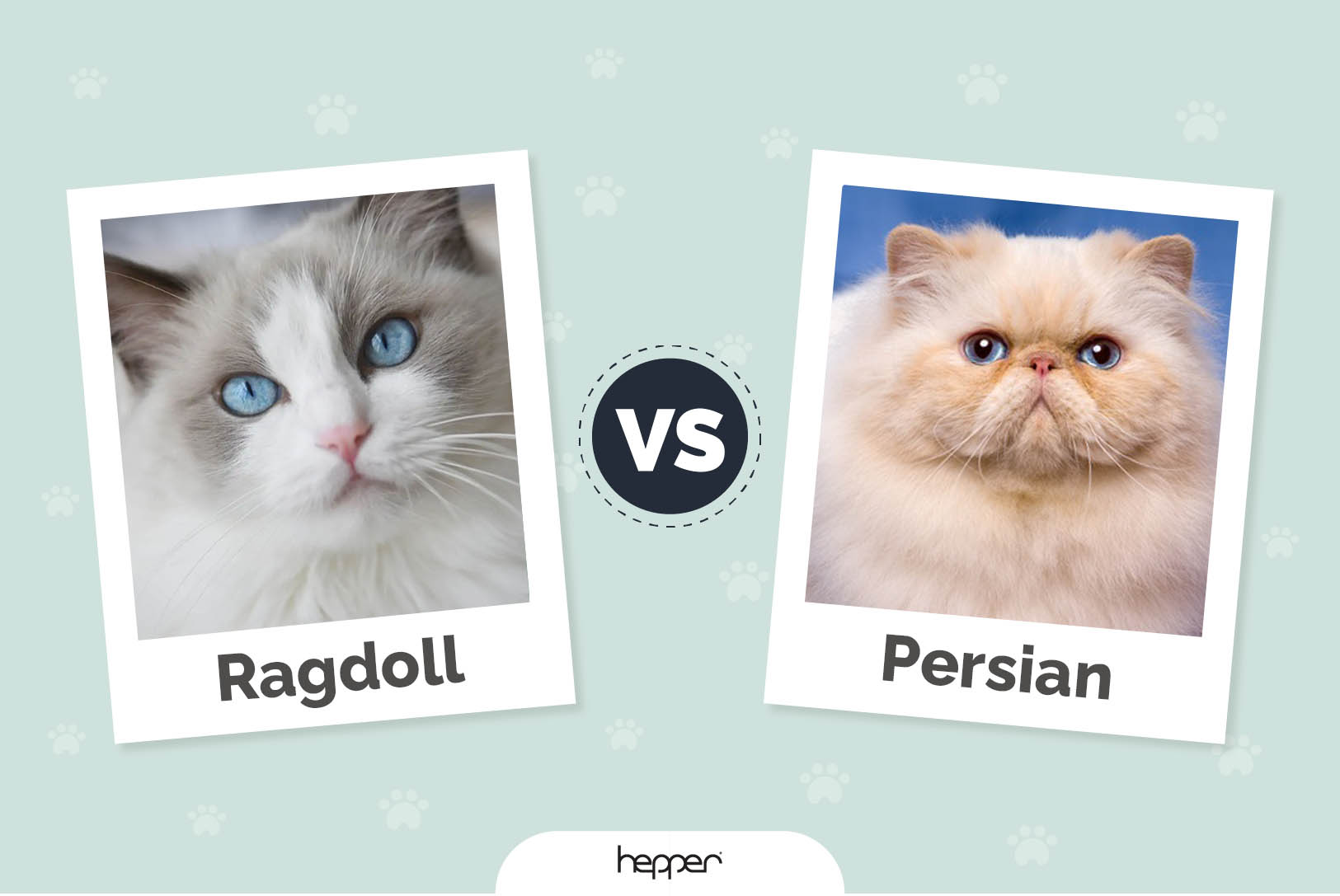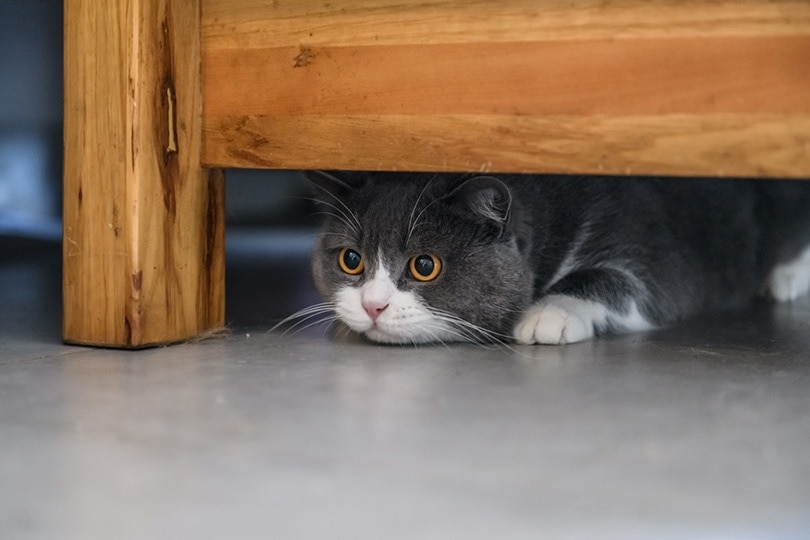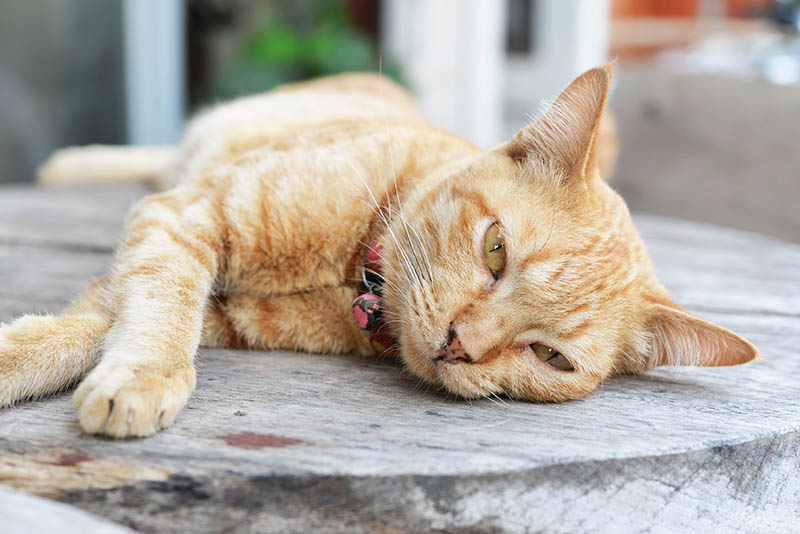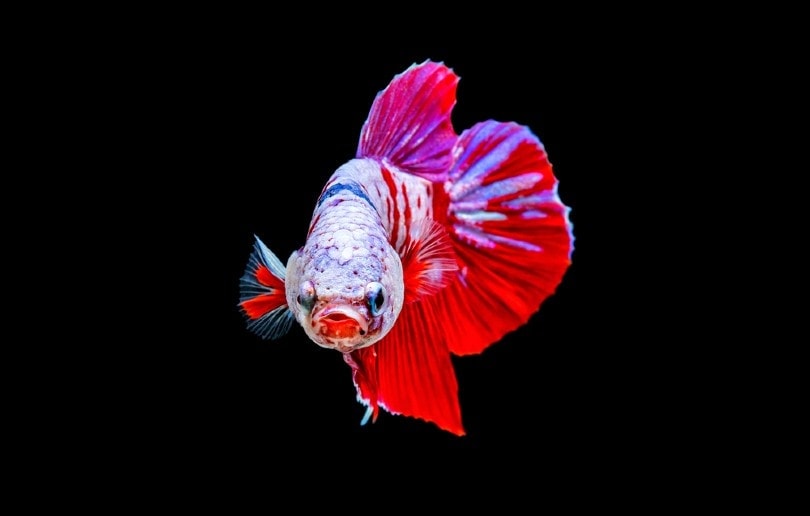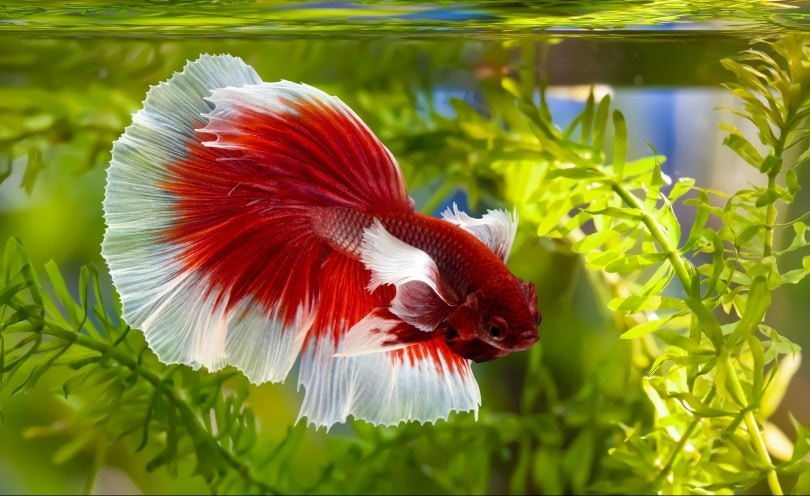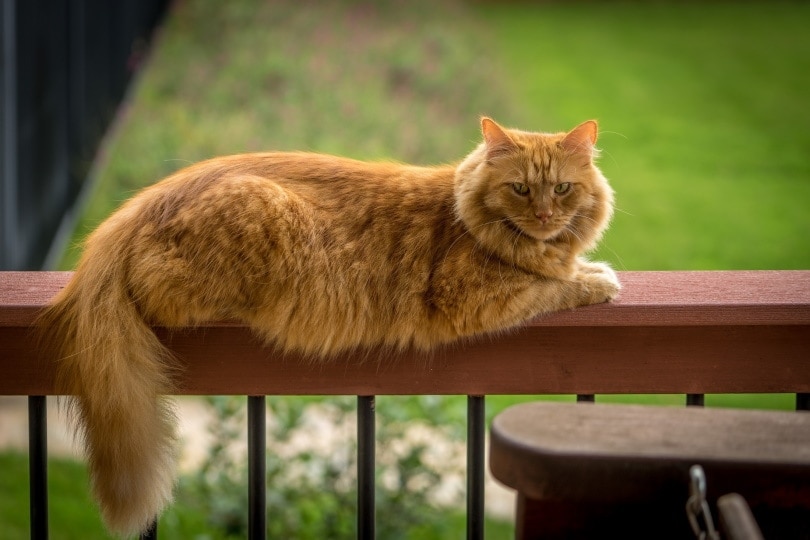Vestibular Disease vs Stroke in Cats: Vet-Reviewed Differences

Updated on
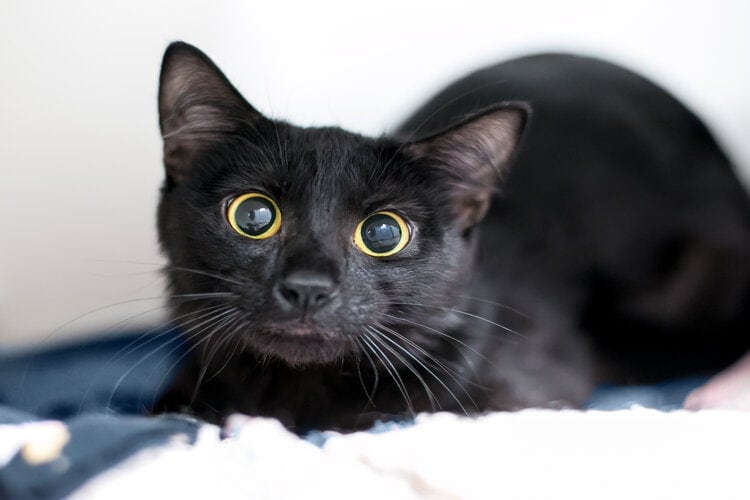
Click to Skip Ahead
Understanding the differences between vestibular disease and a stroke in cats is quite difficult. Both of these situations present in many of the same ways but affect different areas of your cat’s body. Vestibular disease affects your cat’s inner ear and the vestibular apparatus inside. Stroke is considered the more severe of the two ailments. It affects your kitty’s brain and can leave long-term effects. Let’s take a look at these two dangerous situations your cat may face. This will help you learn what to look for and how to determine which ailment your cat may be suffering from.
Overview of Vestibular Disease in Cats

Vestibular disease in cats can be quite frightening when it appears and is often mistaken for a stroke. If you aren’t familiar with vestibular disease it causes a severe lack of coordination in cats. Stumbling, falling over, and even nausea and vomiting can be signs of this issue. What’s even scarier is the fact that these symptoms can affect your cat without notice, often presenting themselves within an hour’s time frame.
Your cat’s vestibular apparatus is located in the inner ear. This apparatus helps cats maintain their balance and helps them with their sense of direction. If your cat’s vestibular apparatus is damaged or becomes diseased, your feline friend’s equilibrium, or balance, will be affected.
- Most cats recover within a few weeks
- Affects balance and coordination
- Alerts to damage or disease of the inner ear
Overview of Stroke in Cats
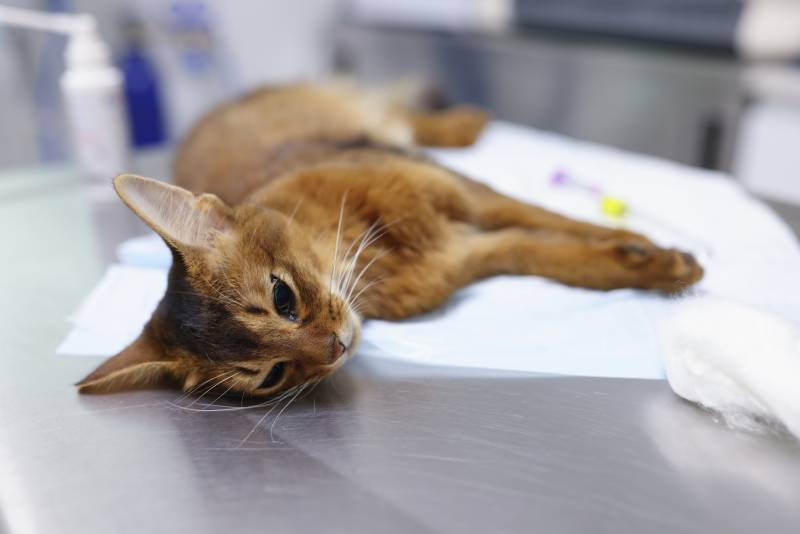
A stroke takes place when blood flow is impaired as it travels through the blood vessels inside the brain. This lack of blood flow leads to the destruction of brain tissues. For humans, strokes are quite common. When it comes to our pets, this isn’t the case. One of the reasons why is because, until recently, diagnostic tests to determine whether your cat had suffered from a stroke were simply not readily available.
There are two types of strokes your cat can suffer from: an ischemic or a hemorrhagic stroke. The type is normally determined by the origin. An ischemic stroke is caused by a blockage by a blood clot inside the vessel. A hemorrhagic stroke is caused by the rupture of the vessel where the bleeding presses on and damages the brain tissue.
The symptoms of a stroke depend on what area of the brain is affected, the severity, and how much brain tissue is damaged. This damage that occurs to the brain and the rapid and sudden onset of the symptoms often involved with a stroke are the biggest differences between stroke in cats and other illnesses such as vestibular disease. The cats appear normal one minute and the next they manifest neurological symptoms.
- Not as common as vestibular disease
- Symptoms can be severe
- Some cats may not be able to recover
All About Vestibular Disease in Cats
While we learned what vestibular disease is, there is a lot we still need to learn. Any disease or disorder that affects your pet’s sense of balance should be taken seriously. This is especially true for cats who are constantly demonstrating their control of balance with their high climbing antics. Let’s take a more in-depth look at the causes, symptoms, and treatments for vestibular disease in cats.
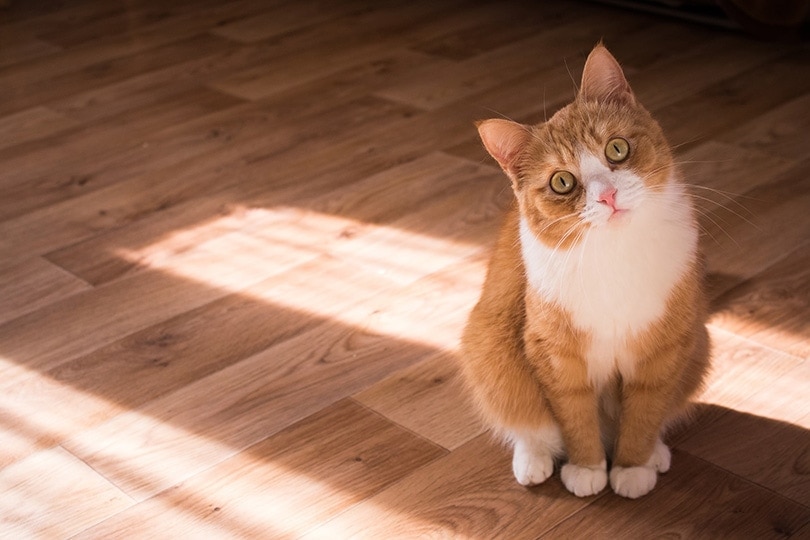
The Causes of Vestibular Disease in Cats
As pet parents, we want to understand ailments that our fur babies suffer with. This understanding will help us maintain their health and be aware of diseases and illnesses they may be prone to. When it comes to vestibular disease, it’s hard to scientifically understand why it presents itself in some cats. As we’ve mentioned, inner ear disease and damage is one reason your cat may present with vestibular disease. Tumors, infections, and certain toxins may even bring on symptoms. In the majority of cases, however, veterinarians diagnose the onset as idiopathic, or unknown causes.
The Signs and Symptoms of Vestibular Disease
Unfortunately, the symptoms of vestibular disease are easy to recognize. Circling to one side when your cat is walking, falling, stumbling, confusion, odd eye movements, and head tilting are a few of the primary signs. When these present, they can also be followed by nausea and vomiting. The overall sense of confusion your cat experiences should alert you to something being wrong and is why you should immediately take them to the veterinarian for proper diagnosis and treatment.
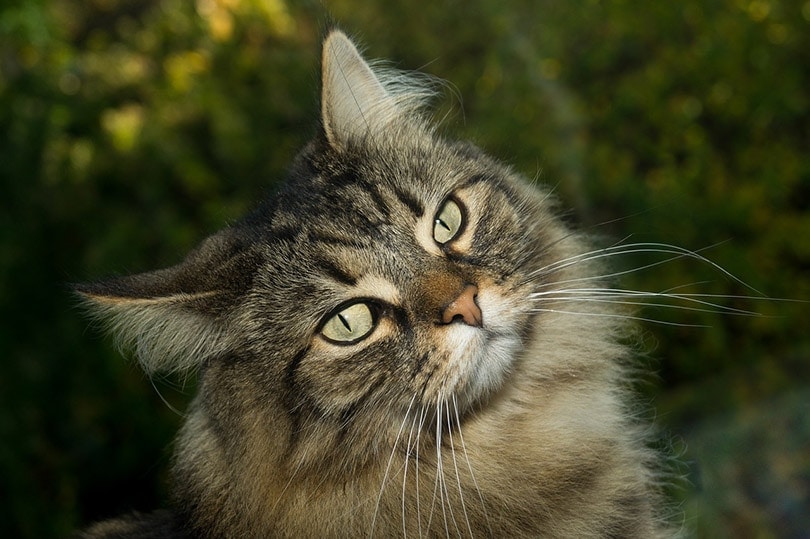
Diagnosis and Treatment of Vestibular Disease
There are no exact tests veterinarians can conduct to determine whether your cat suffers from vestibular disease. Normally, it is the signs and symptoms that are used for the diagnosis of this illness. In hopes of being sure, your vet may also do blood tests, MRIs, or ear cytology or cultures. These tests are used to help your veterinarian determine how serious your cat’s case is. It should be noted that cats who are deaf often suffer from this ailment. Burmese and Siamese breeds are associated with inherited forms of vestibular disease.
Unfortunately, there is no particular treatment for vestibular disease. Instead, your cat’s veterinarian will treat the individual symptoms since it’s a self-resolving disease. If ear infections are present, antibiotics, antifungal, or antiparasitic medications will be given to alleviate the infection and pain. For idiopathic cases, your cat may be given medication for motion sickness, nausea, or vomiting. This is done to help them feel some relief while they are waiting for symptoms to pass. You, as the pet parent, will be a very important part of your cat’s treatment as you’ll be giving them medications and helping them eat and drink during this time.
Luckily, there are no signs leading veterinarians to believe vestibular disease is contagious. This means it should not be passable between cats or other animals. It is also not transmitted to humans, which allows you to safely treat your cat during this period.
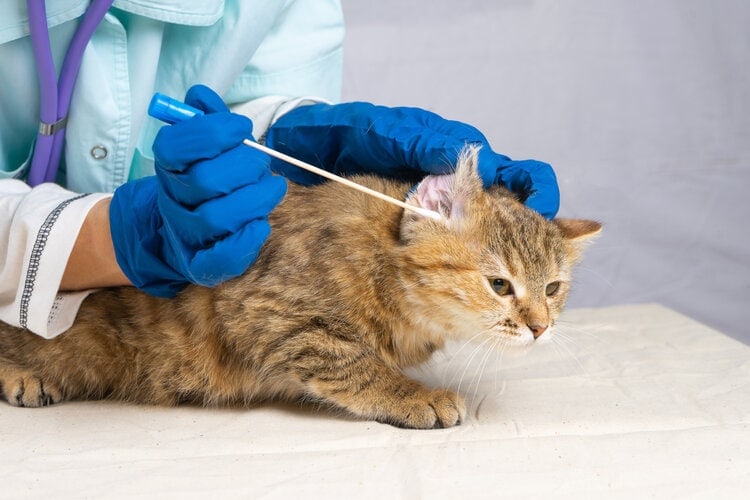
How Long Do Symptoms Last?
Vestibular disease is a short-term issue. Normally, you’ll see the worst of your cat’s symptoms during the first 24–48 hours of onset. With proper treatment from your veterinarian and good care from their owners, most cats will be fine and back to normal within a couple of weeks at most.
All About Strokes in Cats
Most of us are aware of what a stroke is, but seeing it take place in our pets can be difficult to witness. With the improvement of diagnostic testing that alerts veterinarians, it is easier to determine when a stroke has taken place or if another ailment may be the culprit for your cat’s symptoms. Luckily, for cats and their owners, the severity of strokes in cats is often less severe than when it takes place in humans. This gives our kitty friends good odds of improvement after the event occurs.
Types of Strokes and Their Causes
When it comes to strokes in cats, older cats are those normally affected. Commonly, cats older than 9 years of age experience stroke. In most situations, this happens due to other, underlying conditions your cat is suffering from. Cancer, especially when it affects the brain, high blood pressure, parasites, heart disease, diabetes, and kidney disease are often the culprits. In most cases, however, determining the exact cause of a stroke can be hard for your vet to do.
As we’ve mentioned above, two specific types of stroke can present in cats. A hemorrhagic stroke takes place when an artery is damaged or busts in the brain. When this leads to bleeding in your cat’s brain, it is considered a hemorrhagic stroke. During this event, the bleeding causes blood to press on the brain tissue. This can result in damage to that part of the brain.
An ischemic stroke takes place when the blood flow to your cat’s brain is suddenly stopped. Normally, this lack of blood flow happens when a blood clot forms either on the site of the blockage (thrombosis) or elsewhere and travels through the blood vessels until it gets stuck in a narrower vessel, such as a capillary (embolism).
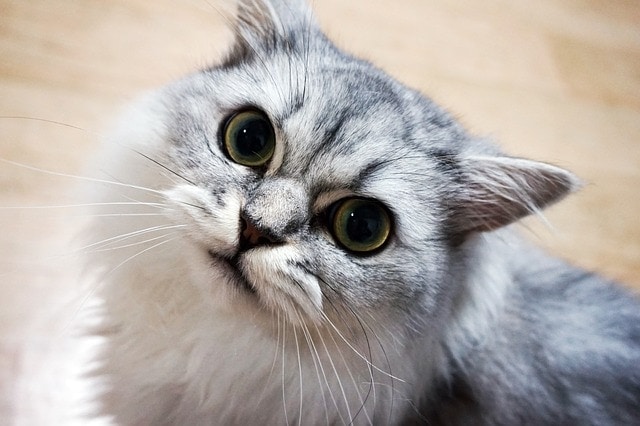
Symptoms of a Stroke in Cats
When it comes to strokes taking place in cats, there are quite a few symptoms you should keep your eyes open for. These symptoms often onset quickly and present the same no matter which type of stroke is taking place. The bleeding or blockage inside your cat’s brain and the amount of damage done to the brain tissue are what determine how bad the symptoms are.
It is important to remember that some of the symptoms of stroke in a cat are similar to those of other diseases. This makes it difficult for veterinarians to determine the proper course of action without extended tests. Luckily, for healthy cats with less severe symptoms, recovery is common. For us pet owners, seeing the symptoms, which are at the worst in the first 24 hours, is quite difficult to handle.
- Muscle spasms
- Unequal pupil size
- Arching body
- Falling and circling
- Odd eye movements
- Vision loss
- Off-balance
- Head pressing
- Head tilting and turning
- Weakness
- Coma
Diagnosis and Treatments of Strokes
When it comes to diagnosing whether your cat has had a stroke, your veterinarian will rely heavily on what you’ve seen take place at home. Once you’ve provided them with a full list of symptoms and the timing of the event, they will do both a physical and neurological exam on your cat along with required lab work. Many of these tests are done to rule out other diseases that may present in the same way as a stroke. CT scans and MRIs will then be done to determine the extent of damage to your cat’s brain.
If it is determined that your cat has had a stroke, then treatment will begin. Normally, these treatments are used on the symptoms and to offer your cat the support it needs during this time. Oxygen, medications to reduce seizures if they are taking place, providing hydration and nutrition, helping with cleanliness and bathroom functions, and physical therapy are the most common aids rendered to a cat after suffering a stroke.
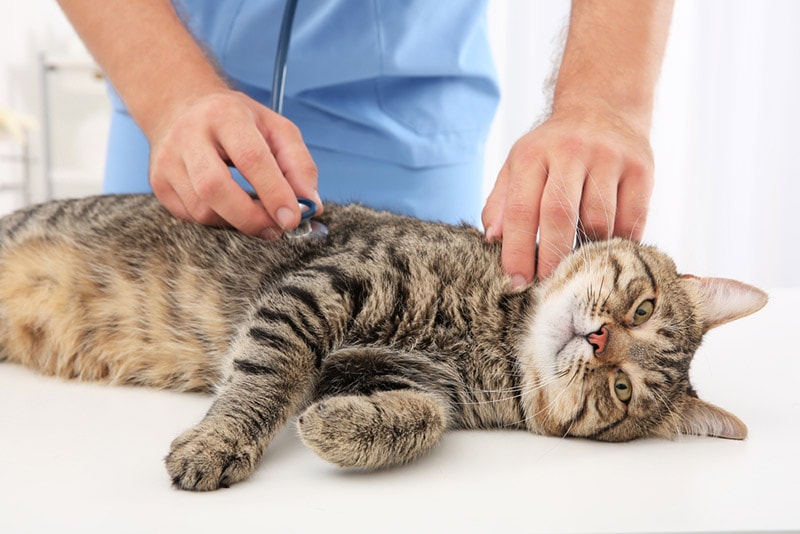
Brief Comparison of Symptoms
- Stumbling and falling
- Head tilt
- Loss of balance
- Circling
- Confusion
- Vomiting
- Muscle spasms
- Unequal pupil size
- Abnormal eye movements
- Arching body
- Falling and circling
- Weakness
Conclusion
As you can see, there are several symptoms of vestibular disease and stroke in cats that are similar. This is why these two ailments are often confused with one another. While vestibular disease is a self-healing situation, visiting your veterinarian for a proper diagnosis is crucial. When you feel your cat has suffered a stroke, a more severe situation, get your cat to the veterinarian immediately. Discovering any underlying conditions and starting treatment quickly is the best way of helping your cat recover after such a dangerous situation.
Featured Image Credit: Mary Swift, Shutterstock



